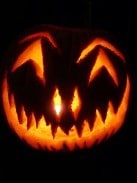I have a problem with smiling. And nodding.
 Thee problem is this: there’s only a handful of words in the English language to express those actions: smile, beam, grin, smirk, simper. Nodding is even worse: nod. Other versions of this one tend to draw attention to the words instead of showing the characters’ actions: bobbed his head (“up and down,” if you want to make it even more annoying).
Thee problem is this: there’s only a handful of words in the English language to express those actions: smile, beam, grin, smirk, simper. Nodding is even worse: nod. Other versions of this one tend to draw attention to the words instead of showing the characters’ actions: bobbed his head (“up and down,” if you want to make it even more annoying).
But the real problem here is that every smile and every nod don’t look like or mean the same thing. There are sinister smiles, eager grins, coy smiles, small smiles, half smiles, half smirks. There are greeting nods, indicating nods, assenting nods, effusive nods, reluctant nods, slow nods, quick nods.
Obviously my problem is not identifying the kinds of smiles and nods humans use. My problem comes from describing them in writing, because that’s against the rules. There are a lot of so-called rules in writing. As with anything with a body of ad hoc regulations, many of the rules contradict each other. Like these:
1. Never use adverbs. Ever! (Corollary: adjectives are bad; they are trouble!)
and
2. Always use strong verbs. Until you make yourself, your characters and your readers tired!
(We’ll talk more about Rule #1 another day.)
When do they conflict? I’ll show you. Consider:
He gave her a kind smile OR He smiled at her kindly
He shot her a bemused look OR He looked at her bemusedly
He gave his thumb a pensive chew (LOL) OR He chewed his thumb pensively
 And do they need the forbidden modifier? I think so. Can you infer the meaning of his grin with just “He smiled at her”? (I have two images in mind here: “He smiled at her. Mmm. Lunch.” and “He smiled at her. Oh, a friend.”) A thumb chewer may be a small child seeking comfort, an adult pondering a problem or a guy with a nervous habit.
And do they need the forbidden modifier? I think so. Can you infer the meaning of his grin with just “He smiled at her”? (I have two images in mind here: “He smiled at her. Mmm. Lunch.” and “He smiled at her. Oh, a friend.”) A thumb chewer may be a small child seeking comfort, an adult pondering a problem or a guy with a nervous habit.
Now, of course, there are lots of other ways to show the intent behind nods and smiles. But setting aside all of the myriad other possible constructions, what do you think: which of the above contrasts are better? Which is the lesser of two evils?
Photo credits—Mona Lisa: Songkran; Jack-o-lantern: Joanie Cahill


I think I’m going to have to start taking classes from you. All the things I need to work on just boggle my mind. By the way, I gave you an award.
LOL, Stephanie, I know you’re a total pro.
Thanks so much for the award! Feel free to email me with the details.